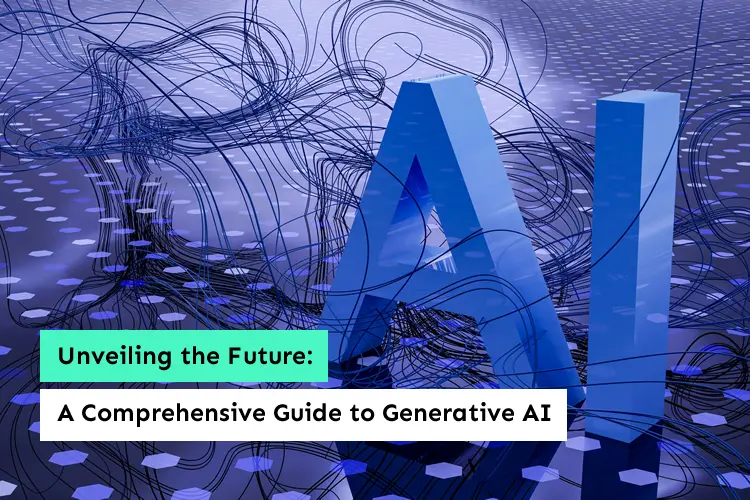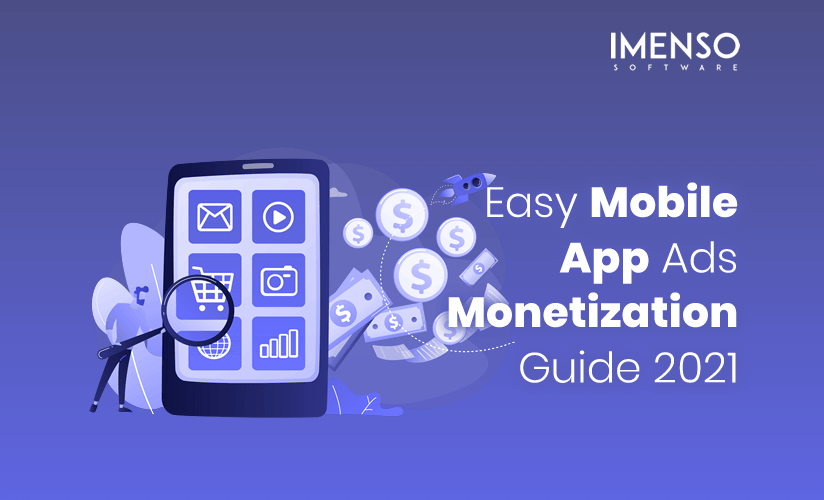Unveiling the Future: A Comprehensive Guide to Generative AI

In recent years, artificial intelligence (AI) has made significant strides, and one of the most intriguing advancements is in the realm of generative AI. Generative AI is revolutionizing various industries, from art and music to healthcare and finance. This comprehensive guide aims to explore the intricacies of generative AI, its applications, challenges, and future prospects.
Understanding Generative AI

Generative Artificial Intelligence (AI) represents a paradigm shift in machine learning, moving beyond traditional models focused on classification and prediction tasks to one that can autonomously create new and original content. At its core, generative AI harnesses the power of advanced algorithms and neural network architectures to generate data instances that closely resemble the patterns and characteristics of the training data it was exposed to. This process involves learning the underlying structure of the data and then synthesizing new examples that exhibit similar features and distributions.
Generative AI models operate on the principle of learning a probabilistic representation of the input data, enabling them to generate novel outputs that exhibit realistic characteristics. Unlike traditional AI systems that rely on explicit programming and predefined rules, generative models learn implicitly from the data itself, capturing complex patterns and relationships to produce new content.
Types of Generative Models

Variational Autoencoders (VAEs)
Variational Autoencoders (VAEs) are a type of generative model that combines elements of autoencoders with variational inference techniques. VAEs consist of two main components: an encoder and a decoder. The encoder maps the input data into a latent space, where each point represents a different encoding of the input. The decoder then maps points from the latent space back to the original data space, reconstructing the input. During training, VAEs learn to generate new samples by sampling from the latent space and decoding these samples into the data space. By learning a probabilistic distribution over the latent space, VAEs can generate diverse and realistic outputs.
Generative Adversarial Networks (GANs)
Generative Adversarial Networks (GANs) are a powerful class of generative models that consist of two neural networks: a generator and a discriminator. The generator generates synthetic data samples, while the discriminator tries to distinguish between real and fake data. The two networks are trained simultaneously in a game-like setting, where the generator aims to generate realistic samples that fool the discriminator, while the discriminator aims to accurately classify real and fake samples. This adversarial training process results in the generator producing increasingly realistic outputs over time. GANs have been successfully applied to various tasks, including image generation, style transfer, and data augmentation.
Autoregressive Models
Autoregressive models are a class of generative models that generate data sequentially, one element at a time. These models learn the conditional probability distribution of each element in the sequence given previous elements. One popular type of autoregressive model is the PixelCNN, which generates images pixel by pixel. The model predicts the value of each pixel based on the values of previously generated pixels, resulting in highly detailed and realistic images. Autoregressive models have been widely used in image and text generation tasks and have shown impressive results in generating complex and structured data.
Flow-based Models
Flow-based models are another class of generative models that learn a bijective mapping between the input data space and a latent space. Unlike autoregressive models, flow-based models do not rely on sequential generation and can generate samples in parallel. These models learn to transform data from a simple distribution, such as a Gaussian distribution, to a complex distribution that matches the training data. Flow-based models have been applied to various tasks, including image generation, density estimation, and data compression. They offer advantages such as efficient sampling and exact likelihood computation, making them well-suited for generating high-quality and diverse outputs.
Transformer Models
Transformer models, such as OpenAI’s GPT (Generative Pre-trained Transformer) series, are based on self-attention mechanisms and have shown remarkable capabilities in generating coherent and contextually relevant text. These models leverage large-scale pre-training on diverse text corpora to learn rich representations of language. By conditioning on input prompts or context, transformer models can generate text that is coherent, grammatically correct, and semantically meaningful. Transformer models have been widely adopted in natural language processing tasks, including text generation, language translation, and dialogue generation, and have demonstrated state-of-the-art performance across various benchmarks.
Each type of generative model has its strengths and limitations, and the choice of model depends on the specific requirements of the task at hand. By leveraging advances in deep learning and probabilistic modeling, generative models are pushing the boundaries of what’s possible in artificial intelligence, enabling machines to generate increasingly realistic and creative content across a wide range of domains.
Applications of Generative AI

Creative Content Generation
Generative AI has unlocked new frontiers in creative expression across various domains, including art, music, and literature. Artists and designers are leveraging generative models to explore novel forms of artistic creation, generate unique visualizations, and experiment with unconventional styles. Generative art generated by AI algorithms has gained attention in the art world, blurring the lines between human and machine creativity. Additionally, musicians are using generative AI to compose music, generate melodies, and create new sounds, pushing the boundaries of musical composition and performance. By enabling artists and musicians to collaborate with AI systems, generative AI is democratizing creativity and inspiring new forms of artistic expression.
Healthcare
Generative AI holds great promise in revolutionizing healthcare by enabling the generation of synthetic data, facilitating medical imaging, drug discovery, and personalized medicine. Generative models can generate realistic medical images, such as X-rays, MRIs, and CT scans, which can be used to augment limited training data for diagnostic algorithms. These synthetic images can help improve the robustness and generalization of AI-based diagnostic systems, leading to more accurate and reliable medical diagnoses. Moreover, generative models are being used in drug discovery to simulate the molecular structure of potential drug compounds and predict their efficacy and safety. By accelerating the drug discovery process, generative AI has the potential to bring new treatments to market faster and address unmet medical needs.
Gaming and Virtual Environments
Generative AI is transforming the gaming industry by enabling the creation of immersive virtual environments, lifelike non-player characters (NPCs), and dynamic game content. Game developers are using generative models to generate realistic landscapes, textures, and animations, enhancing the visual fidelity and realism of virtual worlds. Additionally, generative AI algorithms are being used to create intelligent NPCs that exhibit complex behaviors and adapt to player interactions in real-time. By leveraging generative AI, game developers can create more engaging and immersive gaming experiences, blurring the boundaries between reality and virtuality.
Content Creation and Marketing
Generative AI is being used in content creation and marketing to generate personalized content, automate creative workflows, and enhance customer engagement. Marketers are leveraging generative models to create personalized advertisements, product recommendations, and social media content tailored to individual preferences and demographics. By analyzing vast amounts of data, generative AI algorithms can identify trends, predict consumer behavior, and generate content that resonates with target audiences. Additionally, generative AI is being used to automate repetitive tasks such as image and video editing, freeing up time for creatives to focus on more strategic and high-value activities. As the demand for personalized and engaging content continues to grow, generative AI is poised to play a central role in shaping the future of content creation and marketing.
Fashion and Design
Generative AI is revolutionizing the fashion and design industries by enabling the creation of personalized clothing, accessories, and home decor. Fashion designers and retailers are using generative models to generate custom clothing designs, predict fashion trends, and optimize supply chain operations. By analyzing consumer preferences and style preferences, generative AI algorithms can generate clothing designs that are tailored to individual tastes and body types. Moreover, generative AI is being used to create virtual fitting rooms and augmented reality experiences, allowing customers to visualize and try on clothing virtually before making a purchase. In the field of interior design, generative AI algorithms are being used to generate custom furniture designs, floor plans, and room layouts, helping homeowners and interior designers bring their creative visions to life.
Overall, the applications of generative AI are diverse and far-reaching, spanning across industries and domains. By enabling machines to generate creative and original content, generative AI is driving innovation, transforming industries, and shaping the future of human-computer interaction. As the technology continues to advance, the potential for generative AI to revolutionize various aspects of society is immense, opening up new opportunities for creativity, productivity, and collaboration.
Challenges and Ethical Considerations
Despite its promise, generative AI also presents several challenges and ethical considerations. One of the primary concerns is the potential for misuse, such as the generation of deepfake videos for malicious purposes or the creation of biased and harmful content. Additionally, ensuring the safety and reliability of generated outputs remains a significant challenge, especially in critical domains like healthcare and finance.
Misuse and Malicious Intent

One of the primary concerns surrounding generative AI is the potential for misuse and malicious intent. Generative models can be used to create highly realistic deepfake videos, audio recordings, and textual content, which can be weaponized for spreading misinformation, disinformation, and propaganda. Malicious actors could use generative AI to impersonate individuals, manipulate public opinion, and orchestrate social engineering attacks. As such, there is a pressing need to develop robust detection and mitigation strategies to combat the proliferation of maliciously generated content and protect against the harmful effects of misinformation.
Bias and Fairness
Generative AI models are susceptible to inheriting biases present in the training data, leading to the generation of biased and discriminatory content. Biases in generative models can perpetuate existing societal inequalities and reinforce stereotypes based on factors such as race, gender, and socioeconomic status. Moreover, biased outputs generated by AI systems can have real-world consequences, such as discriminatory hiring practices, unequal access to resources, and perpetuation of systemic injustices. Addressing bias and promoting fairness in generative AI requires careful attention to data collection, preprocessing, and model training practices, as well as ongoing monitoring and evaluation of model outputs for unintended biases.
Privacy and Data Security
Generative AI models often require access to large amounts of data for training, which raises concerns about privacy and data security. Training data may contain sensitive information about individuals, such as personal identifiable information (PII), medical records, and financial transactions. Unauthorized access to training data or generated outputs could result in privacy breaches, identity theft, and unauthorized surveillance. Moreover, there is a risk of data leakage and unintended disclosure of confidential information through generated content. To mitigate privacy and security risks, organizations must implement robust data governance practices, encryption techniques, access controls, and anonymization protocols to safeguard sensitive data and ensure compliance with data protection regulations.
Accountability and Transparency
Generative AI models are often complex and opaque, making it challenging to understand and interpret their decision-making processes. Lack of transparency and accountability in AI systems can erode trust and confidence among stakeholders, including users, policymakers, and regulatory bodies. Furthermore, the black-box nature of generative models can hinder the ability to identify and rectify errors, biases, and unintended consequences. Enhancing accountability and transparency in generative AI requires measures such as model explainability, interpretability, and auditability, as well as clear documentation of model development processes and decision-making criteria.
Societal Impact and Employment Displacement
The widespread adoption of generative AI has the potential to disrupt labor markets and impact employment opportunities across various sectors. As AI systems automate tasks traditionally performed by humans, there is a risk of job displacement and economic dislocation, particularly for low-skilled workers in industries such as manufacturing, retail, and customer service. Moreover, the proliferation of AI-generated content could challenge the authenticity and value of human creativity and craftsmanship. Addressing the societal impact of generative AI requires proactive measures to retrain and upskill the workforce, foster job creation in emerging industries, and promote equitable access to education and training opportunities.
Future Prospects

The future of generative AI is characterized by a trajectory of continuous innovation and advancement, with profound implications across various domains and industries. As researchers and practitioners push the boundaries of what’s possible, several key trends and developments are shaping the prospects of generative AI:
Enhanced Realism and Fidelity
Future generative AI models are expected to exhibit even greater levels of realism, fidelity, and diversity in the content they generate. Advances in deep learning architectures, training techniques, and computational resources will enable the development of models that can generate highly realistic images, videos, and audio with unprecedented levels of detail and nuance. These advancements will blur the boundaries between synthetic and real content, opening up new opportunities for immersive experiences in virtual environments, entertainment media, and creative expression.
Multimodal Generation
Future generative AI models will increasingly focus on multimodal generation, where multiple modalities such as text, images, and audio are synthesized together to create rich and coherent content. By learning joint representations across modalities, these models can generate content that is more contextually relevant, interactive, and expressive. Multimodal generation has applications in areas such as virtual assistants, augmented reality, and human-computer interaction, enabling more natural and intuitive communication between humans and machines.
Personalization and Customization
Generative AI will play a central role in enabling personalized and customized experiences across various domains, including e-commerce, entertainment, and healthcare. By leveraging user data and preferences, generative models can generate content that is tailored to individual tastes, preferences, and needs. For example, in e-commerce, generative models can generate personalized product recommendations, virtual try-on experiences, and custom-designed products. Similarly, in healthcare, generative models can generate personalized treatment plans, medical interventions, and health monitoring solutions tailored to individual patients.
Continual Learning and Adaptation
Future generative AI models will exhibit the ability to continually learn and adapt to changing environments, preferences, and user feedback. By incorporating mechanisms for continual learning and adaptation, these models can improve over time and remain relevant and effective in dynamic and evolving contexts. Continual learning enables generative models to capture long-term trends, address concept drift, and adapt to new data distributions, ensuring robustness and generalization across diverse scenarios and applications.
Ethical and Responsible AI
As generative AI becomes more pervasive in society, there will be an increasing emphasis on ethical considerations, responsible deployment practices, and regulatory frameworks to govern its use. Efforts to address issues such as bias, fairness, transparency, and accountability will be critical to building trust and confidence in generative AI systems. Stakeholder collaboration, interdisciplinary research, and public engagement will be essential in shaping the ethical and societal implications of generative AI and ensuring that it benefits humanity as a whole.
Conclusion:
Generative AI represents a paradigm shift in artificial intelligence, enabling machines to create new and original content across various domains. From art and music to healthcare and gaming, generative models are reshaping industries and driving innovation. However, realizing the full potential of generative AI requires addressing ethical concerns, ensuring the reliability of generated outputs, and fostering responsible deployment practices. As researchers continue to push the boundaries of what’s possible, the future of generative AI holds immense promise for transforming the way we create, interact with, and experience digital content.
We’re honored to mention that our efforts have been recognized by renowned B2B review and research platforms such as GoodFirms, Clutch, MirrorView, and many more.
Want more information about our services?
Similar Posts

How To Choose The Best Offshore Software Development Services
Today’s IT companies spend much time, energy, and money trying to stay one step ahead of the competition. There is no other option but to stand out by utilizing reliable, creative, and economical development approaches, such as offshore development services, as the software market grows more crowded....

NodeJS for Data-Intensive Applications: Use Cases and Best Practices
Are you struggling to ensure optimal performance and scalability for your data-intensive Node.js applications in the face of ever-growing data volumes and complex processing demands? Worry not, as we have the solution for you. By adopting effective monitoring and performance optimization practices, you can overcome these challenges and deliver high-performing, scalable, and reliable applications. In […]...

Easy Mobile App Ads Monetization Guide 2021
Owning a mobile app is a legit revenue-generating successful business stream. According to Statista, by 2023 the mobile app market is expected to generate 935 billion U.S. dollars in revenues via paid downloads and in-app advertising. ...









